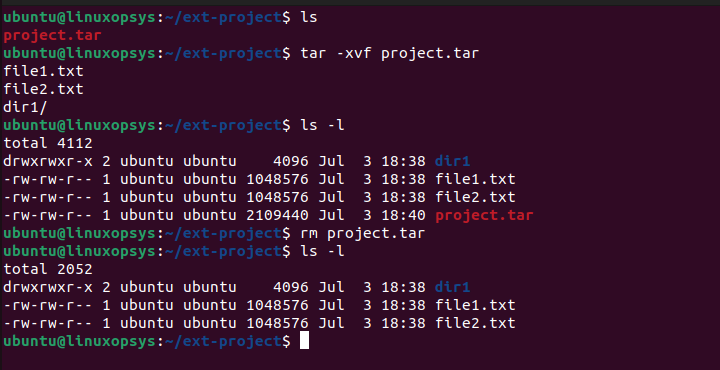Unraveling the Mysteries: A Comprehensive Guide to Tarball in Linux
Creating and extracting tarballs on Linux
Linux provides a powerful tool for creating and extracting tarballs, which are archive files that can hold multiple files and directories. Tarballs have a “. tar” file extension and can be compressed using various compression utilities like gzip, resulting in a “. tar. gz” or “.
tgz” file. To create a tarball, you can use the “tar” command followed by the options and the name of the tarball you want to create. For example, “tar -cvf filename. tar” will create a tarball named “filename. tar” with all the files and directories in the current directory.
To extract the contents of a tarball, you can use the “tar” command with the “xvf” options, followed by the name of the tarball. For example, “tar -xvf filename. tar” will extract the contents of the tarball.

Understanding file extensions in Linux
In Linux, understanding file extensions is crucial for effective file management. One commonly encountered file extension is the tarball, denoted by the . tar extension. Tarballs are archive files that can contain multiple files and directories.
To extract the contents of a tarball, you can use the command tar zxvf
gz or . tgz extension. To extract a compressed tarball, use the command tar zxvf
By mastering tarballs, you can efficiently manage and compress files in Linux.
Syntax of the tar command in Linux
The tar command in Linux is used to create, extract, and manipulate tarball files. Tarball files are archive files that can contain multiple files and directories. When using the tar command, there are several options and syntaxes that can be used.
To create a tarball file, the command syntax is:
tar -cvf
To extract files from a tarball, the command syntax is:
tar -xvf
To view the contents of a tarball, the command syntax is:
tar -tvf
To compress a tarball using gzip, the command syntax is:
tar -czvf
To compress a tarball using xz, the command syntax is:
tar -cJvf
These are just a few examples of the syntax used with the tar command in Linux. It is a powerful tool that can be used to manage files and directories efficiently. With some Linux training, you can easily learn how to use the tar command and take advantage of its features.
Utilizing wildcards for searching in Linux
To search for files with a specific file extension within a tarball, you can use the * wildcard. For example, if you want to find all PDF files in a tar archive, you can use the command “tar tf filename.tar.gz | grep .pdf”.
To search for files based on a specific word or phrase, you can use the * wildcard as well. For instance, if you want to find all configuration files containing the word “network” in a tarball, you can use the command “tar tf filename.tar.gz | grep *network*”.
By utilizing wildcards, you can quickly and effectively locate the files you need within a tarball, saving you time and effort. Incorporating this skill into your Linux training will greatly benefit your workflow as a sysadmin or anyone working with Linux systems.


